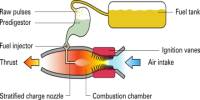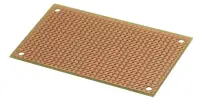Scientists from Singapore’s Nanyang Technological University (NTU Singapore) and the United States’ California Institute of Technology (Caltech) have invented a new form of ‘chain mail’ fabric that is pliable like cloth but stiffens on demand. The lightweight fabric is made up of hollow octahedrons (a form with eight equal triangular faces) that interlock and are 3D-printed from nylon plastic polymers.
When a soft cloth is vacuum-packed and wrapped in a flexible plastic envelope, it becomes a rigid structure that is 25 times stiffer or harder to bend than when it is relaxed. The physical concept is known as “jamming transition,” and it is comparable to the stiffening behavior seen in vacuum-packed rice or bean bags.
The breakthrough, known as ‘wearable structural textiles,’ might pave the way for next-generation smart fabrics that can harden to protect a user from an impact or when more load-bearing capacity is required.

Bullet-proof or stab-proof vests, customizable medical assistance for the elderly, and protective exoskeletons for high-impact sports or industries like construction sites are all possible uses. This multidisciplinary study, which was published in Nature today (11 August 2021, 11 a.m. EST), is the product of a partnership between specialists in mechanical engineering and advanced manufacturing.
Nanyang Assistant Professor Wang Yifan, the paper’s primary author, stated that their study is both basic and industrially relevant and that it might lead to a new platform technology with applications in medical and robotic systems that would benefit society.
“With an engineered fabric that is lightweight and tuneable easily changeable from soft to rigid we can use it to address the needs of patients and the aging population, for instance, to create exoskeletons that can help them stand, carry loads and assist them with their daily tasks,” said Asst. Prof Wang from NTU’s School of Mechanical and Aerospace Engineering, who started this research when he was a post-doc researcher at Caltech.
“We utilized plastic hollow particles that are linked to increasing the stiffness of our tuneable textiles, inspired by historical chain mail armor. To further increase the material’s stiffness and strength, we are now working on fabrics made from various metals including aluminum, which could be used for large-scale industrial applications requiring higher load capacity, such as bridges or buildings.”
The corresponding author of the paper, Professor Chiara Daraio, Caltech’s G. Bradford Jones Professor of Mechanical Engineering and Applied Physics, said, “We wanted to make materials that can change stiffness on command. We’d like to create a fabric that goes from soft and foldable to rigid and load-bearing in a controllable way.”
In the 2005 film Batman Begins, Batman’s cape, which is normally flexible but can be made stiff at whim when the caped crusader needs it as a glider, is an example from popular culture.
The science behind the interlocking fabric –
The “jamming transition” is the scientific term for the variable-stiffness fabric. With a small increase in packing density, aggregates of solid particles shift from a fluid-like soft state to a solid-like rigid one. Solid particles, on the other hand, are often excessively heavy and lack sufficient tensile strength for wearable applications.
The authors created structured particles that are made up of hollow frames in the shapes of rings, ovals, squares, cubes, pyramids, and various octahedron shapes that are then linked together in their study. These structures, known as topologically interlocked structures, may then be turned into chain mail fabric with a low density and high tensile stiffness by printing them as a single piece utilizing cutting-edge 3D printing technology.
They then calculated the average number of contact sites per particle as well as how much each structure will bend in response to the applied force. The researchers found a trade-off between how much weight the particles will have against how much the fabric can flex when customizing the particle form, and how to balance the two aspects.
The researchers encased the chain mail fabric in a flexible plastic envelope and compressed the textiles using a vacuum, which provides pressure from the outside, to add a means of regulating the stiffness of the cloth. The vacuum pressure enhances the fabric’s packing density, enabling each particle to have greater contact with its neighbors, resulting in a 25-fold more rigid structure for the octahedron-based fabric.
The fabric could bear a load of 1.5kgs when molded into a flat, tablet-shaped structure and vacuum-locked in place, which is more than 50 times the fabric’s own weight. A tiny steel ball (30 grams, 1.27cm in diameter) was thrown upon the chain mail at 3 meters per second in another experiment. When the cloth was relaxed, it distorted up to 26 mm, but only 3 mm when stiffened, resulting in a six-fold reduction in penetration depth.
To demonstrate the flexibility and ‘soft’ performance of their fabric concept using different source materials, the team 3D-printed chain mail out of aluminum, demonstrating that it has the same flexibility and ‘soft’ performance as nylon when relaxed, but it could also be ‘jammed’ into structures that are much stiffer than nylon due to aluminum’s higher stiffness and strength.
These metallic chain mails might be utilized in body armor applications where they need to defend against severe and high-speed strikes from sharp objects. The encapsulation or envelope material in this scenario might be constructed of aramid fibers, also known as Kevlar, which are frequently used as a fabric in bulletproof vests. Moving forward, the team hopes to increase the material and fabric performance of its chain mail, as well as investigate other stiffening mechanisms like as magnetism, electricity, and temperature.
















